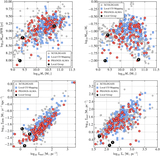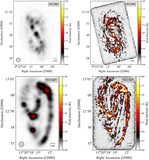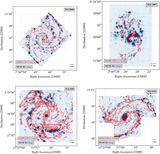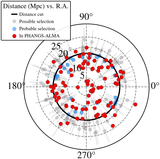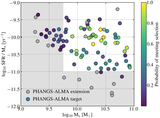Image Details
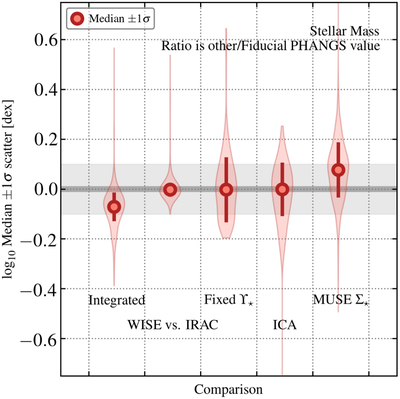
Caption: Figure 9.
Comparisons among stellar mass estimates. Median (point), ±1σ scatter (error bar), and distribution (shaded violin plot) for the ratios of stellar mass estimated in various ways. In each case, we consider the ratio of our adopted estimate, which uses IRAC- or WISE-based near-infrared data and a radially varying mass-to-light ratio estimated following Equation (3), to some other estimate. From left to right we show “Integrated” as comparison between our estimates and those from Leroy et al. (2019) using only integrated photometry, and “WISE vs. IRAC” comparing results using IRAC vs. WISE and treating the data identically. The results are highly consistent except for a few outliers. Next, “Fixed ﹩{{\rm{\Upsilon }}}_{\star }^{3.4}﹩” shows results using only WISE1 intensity with no varying mass-to-light ratio. “ICA” uses independent component analysis−based “old stellar emission” maps from Querejeta et al. (2015) with a fixed mass-to-light ratio. “MUSE Σ⋆” is the 15″ resolution comparison between our mass surface density estimates and PHANGS–MUSE spectral fitting results, available for a subset of targets. The gray line and shaded region show perfect agreement and ±0.1 dex scatter. See also Table 5.
Copyright and Terms & Conditions
© 2021. The American Astronomical Society. All rights reserved.


